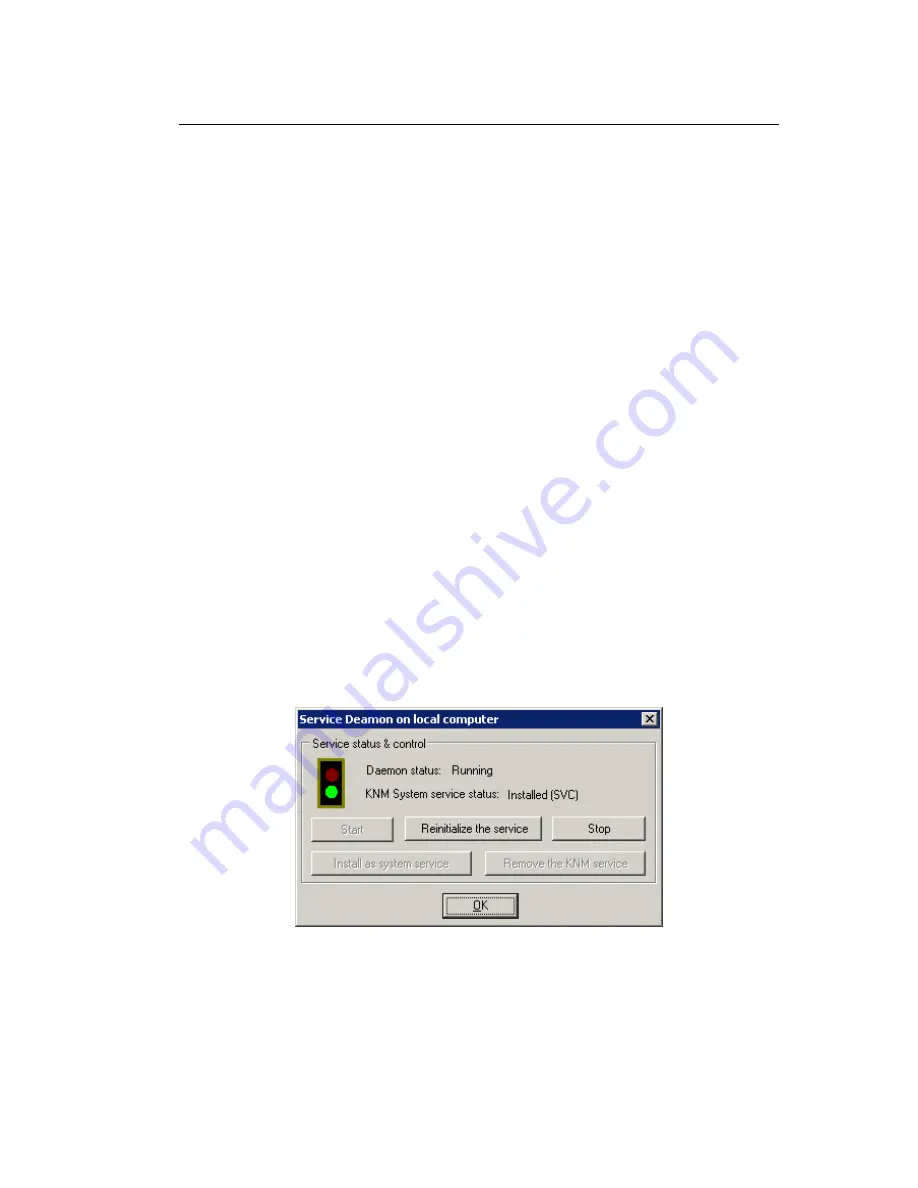
Chapter 5
Program Control
20
User authentication
— enter your user name and password. In case you are logging
to
Kerio Network Monitor
for the first time (after installation), use the predefined user
account
Admin
and leave the password empty. To store passwords in user profiles so
that it is not necessary to specify them for each connection use the
Store password in
user profile
option.
You can perform the login by pressing the button
Login
. The button
Cancel
cancels the
login dialog and also closes the viewer. The
More >>
button expands the dialog by other
options. When pressed, it changes to
Less <<
— it allows the expanded options to be
hidden.
Store password in user profile
User name and password will be stored into the user
profile in Windows and it will not be necessary to enter it on each login. We recom-
mend to use this option only when there is no risk of access rights misuse by another
person!
Don’t restore windows settings
The viewer will not restore the layout of the individ-
ual windows. This can be helpful e.g. when connecting remotely via slow line(it can
significantly decrease the amount of transferred data), or in case that more people
uses the same user account.
5.2 Controlling the Service
After pressing the
More >>
button in the login dialog, the icon for configuration of the
service will appear in the lower right corner of the window. On clicking it, the following
dialog will appear:
Daemon status
Display the status of the service — (
Running
) or (
Stopped
).
KNM system service status
Shows, if the
Kerio Network Monitor Daemon
is installed
as a system service
Installed (SVC)
— in Windows NT/2000/XP), as background appli-
Summary of Contents for Network Monitor
Page 1: ...User s Guide Kerio Technologies...
Page 8: ...Chapter 2 Quick Checklist 8...
Page 14: ...Chapter 3 Technical Information 14...
Page 18: ...Chapter 4 Installation 18...
Page 40: ...Chapter 6 Configuration 40...
Page 66: ...Chapter 8 Web Interface 66...
Page 70: ......
















































